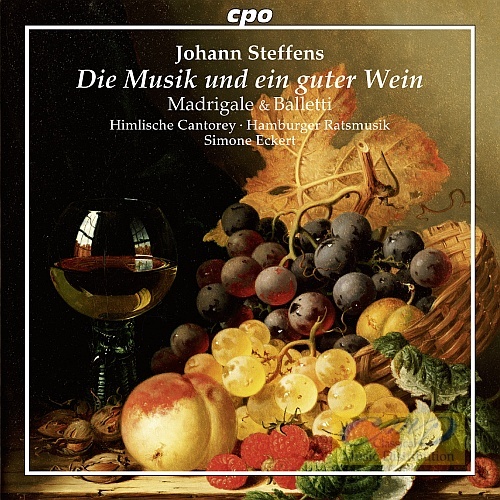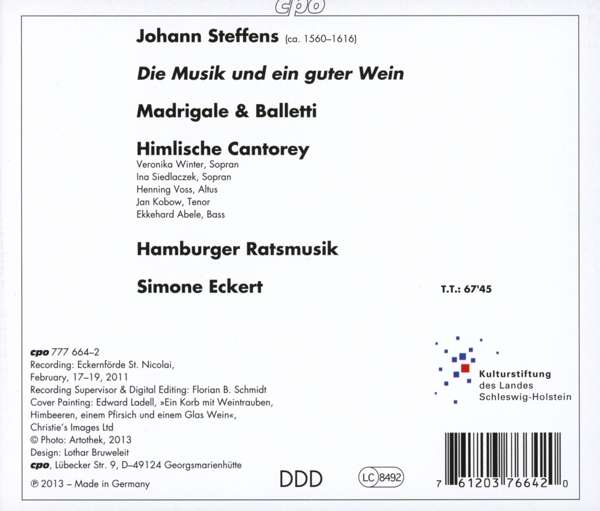
kompozytor
Steffens, Johann
tytuł
Steffens: Madrigale & Balletti
wykonawcy
Hamburger Ratsmusik;
Eckert, Simone;
Himlische Cantorey
Eckert, Simone;
Himlische Cantorey
nr katalogowy
CPO 777 664-2
opis
Johann Steffens is entered in the long list of choirmasters and organists at St. Johannis in Lüneburg, ahead of such eminent successors as Christian Flor and Georg Böhm. The esteem in which he was held is proved by the fact that he took part alongside 54 of the most highly regarded German masters of the organ at the celebrated inspection of the new Gröningen instrument. Steffens's secular vocal compositions display the influence of Hans Leo Hassler and the Italian madrigalists. His Newe Teutsche Weltliche Madrigalia, »New German Secular Madrigals and Balletts both with living Voices and on all manner of Musical Instruments and Strings to be used with great pleasure«, posthumously published by his son Heinrich in 1618, celebrate »wine, women and song«, nature and good company, and reflect the merriment and occasional coarseness of Germany's post-Reformation mercantile classes, yet to experience the horrors of the Thirty Years' War. The jesting, drinking and love songs inspire Steffens to dance-like writing and plain stanza settings with much »falala«-ing, but also to complex through-composed forms. Homophonic writing alternates with contrapuntal work.
nośnik
CD
gatunek
Muzyka klasyczna
producent
CPO
data wydania
05-11-2013
EAN / kod kreskowy
761203766420

(Produkt nie został jeszcze oceniony)
cena 42,00 zł
lubProdukt na zamówienie
Wysyłka ustalana indywidualnie.
Darmowa wysyłka dla zamówień powyżej 300 zł!
Darmowy kurier dla zamówień powyżej 500 zł!
sprawdź koszty wysyłki





























